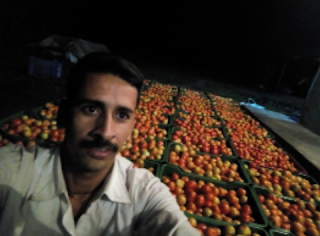The future of farming hangs in the balance, where the average age of an Indian farmer was 50.1years, and only 1.2% of rural youth aspire to be farmers, according to the Annual Status of Education Report (2017) which surveyed 30,000 youth across the country. Additionally, nearly half the farmers in the country, don’t want their children following in their footsteps.
Agriculture is just not deemed attractive or remunerative to today’s youth, who often have white collar aspirations and are encouraged by their families to pursue career paths outside the family farm. What does this mean for the future of farming, food production and food security in India – a country with one of the biggest consumers of food?
“We need to demonstrate to families, that agriculture can be remunerative, innovative and a viable livelihood choice for rural youth.” said Chandrakant Kumbhani, General Manager (Community Development) Ambuja Cement Foundation. “By helping farming families diversify crops, adopt new technology and generate multiple sources of income – for example through animal husbandry, agriculture has the potential to be a prosperous enterprise for tomorrow’s youth.” He said.
And this is exactly what Ambuja Cement Foundation does, via its Agricultural Livelihood program, which works with over 2.2 lakh farmers across 10 states. And the engagement of youth, is a key part of every project.
“Whatever we do, promoting new interventions or practices in agriculture, we encourage youth to be a part of it. Sustainable Crop Production is a key program and we encourage youth to be a part of training processes so that they can learn and integrate new practices on family farm.” He said.
“We work with families and try various initiative in projects at family level to increase profitability. For example, in Sankrail we promote vegetable cultivation and aquaculture. If we can help a family to increase their income level, it builds confidence that they can actually earn from Agriculture. Only then will some of their children come forward to continue farming.” Chandrakant said.
However one of the biggest challenges he sees is the fragmentation of small family farms, due to division of land in successive generations. When you have 3 brothers brought up on 1 acre of landholding, it makes it increasingly difficult for each of them to generate a sustainable income for all three of them as they grow their families.” He said. “Farm sizes are becoming smaller, but by understanding the nuances of new developments and technologies in agriculture we can, and have, helped farmers to increase their output.” He said.
Additionally, by helping a family as a unit diversify income sources, we can make family farming more sustainable. “We are promoting vocational training to help youth inject an additional income stream into the household. If there are 3 children in a family, and 2 of them pursue a vocational course and start earning, the farm will continue to support family in a more sustainable manner.” He said. “In this way, multi layered interventions are required to support an entire family to lift out of poverty.”
Another key initiative backing farmer profitability is the formation of Farmer Producer Organisations. “FPOs help our farmers get an ‘edge’ by helping them tap the market. One of the key problems farmers face is in gaining access to market.” He said. “By building an institutional mechanism, we enable them secure larger contracts and profit share for their produce.” This is an important area where we need to focus in future so FPO can truly become a business case for small farmers.
Thinking outside the box, ACF has also helped farmers ‘layer’ income generation opportunities. “By promoting location specific integrations and innovations to give families the ‘edge’, such as honey bee keeping or strawberry crops or exotic crops, the viability of family farm becomes more pronounced.” He said.
“Empowering farmers to solve their water problems also helps in building profitability. In tribal communities of Farakka we have helped solve water challenges via lift irrigation so that marginalised, small landholder farmers can increase their crops from 1 to 3 crops per year. This has been transformative for them and their families.” Mr Kumbhani said.
And the strategy is working, with many examples of young farmers coming forward to take up the profession in a new, more innovative way. Farmers like 35 year old Hem Raj from Pazina village, Darlaghat. Hemraj’s interest in agriculture started to grow when his father planted a Mango orchard around his house when he was a child. Choosing to follow in his father’s footsteps he got into farming and he attended a few agriculture camps run by ACF in his village, where he learnt about tomato cultivation as a cash crop. But Pazina village did not have proper road access which enabled farmers to take vegetables to market in a timely fashion, and during the rains the road was closed. Hemraj began mobilising farmers in his community to build the road, taking the support of the Panchayat and ACF along the way. Having championed the cause, Hemraj was thrilled when the Pazina road was finally built – opening up a corridor which allowed him and other farmers to cultivate tomatoes and capsicum and generate more income. Buoyed by his success, he became a member of the FPO when it was created and collectively, the farmers sold 19.6 tonnes of tomato in the market. He has since diversified even further, selling milk and planting other fruit varieties like lemon and pomegranate. Today he earns Rs.3,50,000 per year from pursuing his passion for farming.
“Every day 2,000 farmers give up farming, and nurturing the next generation of farmers needs to be on the agenda of all stakeholders working in Agriculture.” Mr Kumbhani said.







0 Comment